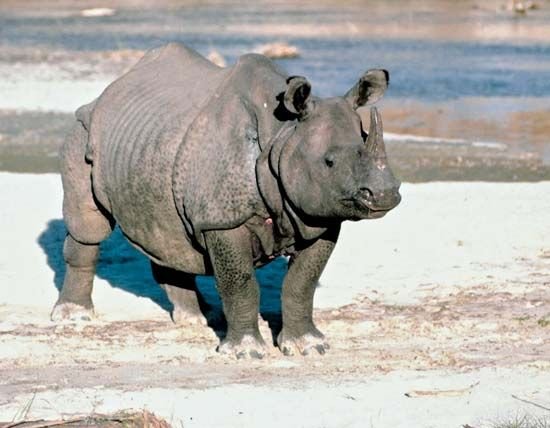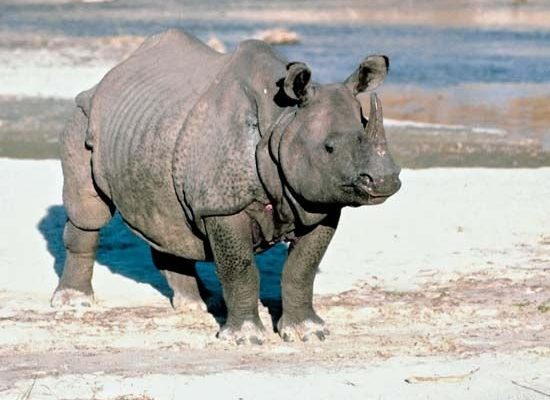
The Indian rhinoceros, or *Rhinoceros unicornis*, is the largest of the rhino species and is known for its unique features and behavior. While they may seem intimidating, they’re actually quite social and adaptable. In this article, we’ll dive into ten captivating facts about the Indian rhino that highlight their importance and uniqueness in the animal kingdom. So, grab your coffee, and let’s explore the world of these incredible creatures!
1. The Unique Look of Indian Rhinoceros
One of the first things you’ll notice about the Indian rhinoceros is their thick, protective skin, which resembles armor. This skin is made up of large folds that give them a distinct look. In fact, it’s one of the most recognizable traits of the species! The skin itself is quite interesting—it’s not as tough as it appears. Instead, it’s sensitive and can be easily harmed by sunburns. That’s why you can often spot them wallowing in mud. It’s like their natural sunscreen, helping to keep them cool and protect their skin from harmful UV rays.
You might wonder why they have only one horn when most people think of rhinos having two. The Indian rhino is unique in that regard! This single horn can grow up to 25 inches long and is made of keratin, the same material that makes up our hair and nails. While it might look fierce, the horn is mainly used for fighting and dominance displays rather than for defense against predators.
2. Habitat of the Indian Rhinoceros
The Indian rhinoceros primarily inhabits the grasslands and forests of northeastern India and parts of Nepal. These areas provide them with the lush vegetation and water sources they need to thrive. You can often find them near rivers and swamps, where they enjoy wallowing in mud and water. It’s like their own personal spa day!
These habitats are crucial not just for the rhinos but for many other species as well. The Indian rhino contributes to the ecosystem by grazing on grasses and shrubs, which helps maintain the balance of plant life in their environment. When a rhino moves through the grasslands, it creates paths that other animals can use, making them a pivotal part of their ecosystem.
3. Social Behavior and Communication
You might be surprised to learn that Indian rhinoceroses are quite social animals. They are often seen in groups, especially mothers with their calves, which adds to their charm. While they can be solitary, they also enjoy the company of others. Their social interactions primarily revolve around communication, which includes a mix of vocalizations and body language. From grunts to squeals, these rhinos have a whole vocabulary to convey their feelings.
Mothers are particularly protective of their young. A baby rhino stays with its mother for about three years, learning important survival skills. It’s a heartwarming sight to see a baby rhino trailing behind its mother, mimicking her movements. Their bond is incredibly strong, showcasing the caring nature of these massive mammals.
4. Conservation Status and Threats
The Indian rhinoceros is classified as vulnerable, primarily due to habitat loss and poaching. Here’s the thing: their horns are highly sought after in traditional medicine and as a status symbol, which puts them at serious risk. Conservation efforts have ramped up over recent years to protect these amazing animals, but challenges remain.
Protected areas like Kaziranga National Park in India play a vital role in helping rhino populations recover. This UNESCO World Heritage Site is home to a significant number of Indian rhinos. Efforts like anti-poaching patrols and habitat preservation are vital in ensuring the safety of these creatures. But it takes the collective effort of everyone—from local communities to global organizations—to make a real impact.
5. Diet and Feeding Habits
When it comes to food, Indian rhinoceroses are herbivores that enjoy a varied diet predominantly made up of grasses. They also munch on leaves, fruits, and berries when they can find them. Think of them as the gardeners of their habitat, maintaining the plant life by selectively grazing. This behavior encourages new growth, which benefits other animals in the ecosystem.
Rhinos have strong, flexible lips that allow them to grab and pull vegetation easily. They can consume over 100 pounds of food each day, so they spend a significant portion of their time eating! It’s incredible how such a large animal can thrive on a diet focused mainly on plants and grasses, but that’s just part of their charm.
6. Reproduction and Lifespan
The reproductive cycle of the Indian rhinoceros is fascinating. Females can reach sexual maturity around 4-5 years of age, and they typically have a gestation period of about 15-16 months, which is quite long! When a calf is born, it usually weighs around 100 pounds, a hefty start for such a young animal.
After giving birth, the mother tends to be quite protective, ensuring her calf is safe from potential threats. Interestingly, rhinos can live up to 40 years in the wild and even longer in captivity. This longevity allows them to play a crucial role in their social structure and environment throughout their lives.
7. Rhino Relocation and Translocation Efforts
As part of conservation efforts, many Indian rhinos are relocated to safer habitats. This process involves carefully moving animals to new locations where they can thrive away from poaching threats. It’s not just about moving them; it requires extensive planning and monitoring to ensure their successful adaptation to a new environment.
Translocation efforts have proved successful in boosting rhino populations in areas where they were previously endangered. For instance, some rhinos from Kaziranga have been relocated to Manas National Park. These efforts highlight the dedication to preserving this majestic species and the adaptability of these animals.
8. The Indian Rhino in Culture and Folklore
The Indian rhinoceros holds a special place in the hearts of many cultures, especially in India. In Hindu mythology, they are often depicted as symbols of strength and power. Their impressive size and unique features have made them subjects of art, stories, and folklore throughout history.
In modern times, they’ve become symbolic of wildlife conservation. Various organizations use the image of the Indian rhino to raise awareness about wildlife protection and conservation efforts. It’s powerful how this animal represents more than just its species; it embodies the fight against extinction and the need to preserve our planet’s biodiversity.
9. Interesting Adaptations
The Indian rhinoceros has some unique adaptations that help it survive in its habitat. For example, their large size isn’t just for show; it helps them ward off predators. Their thick, protective skin shields them from the elements, while those folds are perfect for retaining moisture, which is essential for their well-being.
Another fascinating aspect is their poor eyesight, but their sense of smell and hearing are incredibly keen. This compensates for their visual limitations, allowing them to navigate their environment effectively. They can detect sounds and scents from miles away, making them more aware of their surroundings than you might think.
10. Fun Facts to Wrap It Up!
To finish off, here are some fun facts that will make you appreciate the Indian rhinoceros even more:
- Indian rhinos are the largest species of rhinos, often weighing over 2,200 kg (about 4,850 lbs).
- They can run surprisingly fast—up to 30 miles per hour, despite their bulk!
- Unlike other rhino species, they lack body hair, making their skin appear even more intriguing.
- They are known to have excellent memories, helping them navigate their vast territories.
- These gentle giants can often be seen floating in rivers or lakes, enjoying a leisurely swim.
As we wrap up our journey through the fascinating world of the Indian rhinoceros, it’s clear that these creatures have a lot to teach us. Their survival relies not only on their adaptations but also on our commitment to protecting them and their habitats. Let’s celebrate the beauty and importance of the Indian rhino while doing our part to ensure their legacy continues for generations to come.

